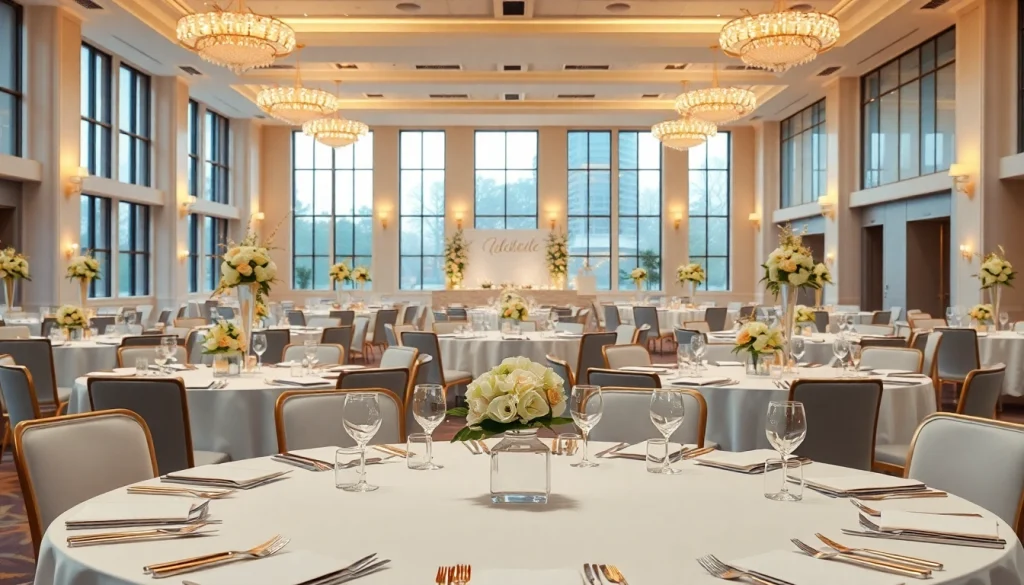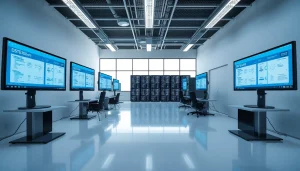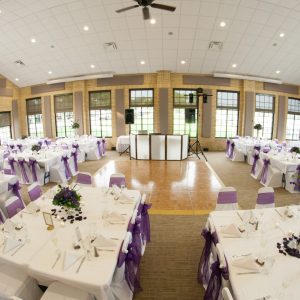Choosing the Perfect Event Space: Key Factors to Consider for Successful Gatherings

The Importance of Selecting the Right Event Space
Choosing the right event space is crucial for the success of any gathering, whether it be a corporate conference, a wedding, or a community festival. A well-selected venue can set the tone for the entire event, impacting attendee engagement, satisfaction, and overall experience. In this article, we will delve deeply into the aspects of selecting the perfect event space, exploring various types, their impact on attendees, common pitfalls to avoid, essential features, budgeting strategies, best booking practices, and ways to maximize impact.
Understanding Event Space Types
Event spaces can be broadly categorized into several types, each suited for different kinds of gatherings:
- Corporate Event Spaces: These usually include conference halls, meeting rooms, and banquet rooms tailored for corporate needs. They often feature advanced audio-visual technology.
- Social Event Spaces: These can range from elegant ballrooms for weddings and parties to more casual environments like community centers or outdoor venues.
- Outdoor Spaces: Parks, gardens, and beach areas are popular for festivals and social gatherings, providing a unique ambiance but often requiring contingency plans for weather.
- Cultural Venues: Museums, galleries, and theaters provide a unique backdrop and can cater to events that require an artistic flair or educational component.
- Hybrid Spaces: With the rise of virtual events, hybrid venues are becoming more sought after, combining physical attendance with virtual engagement.
How Event Space Affects Attendee Experience
The chosen event space significantly influences the attendee experience. Factors such as layout, accessibility, and ambiance affect how participants interact with each other and the content of the event. A well-designed space can foster networking, encourage participation, and create lasting memories. Conversely, a poorly chosen venue can lead to disengagement, frustrations over accessibility, and an overall lackluster experience. For example, a cramped space for a large audience can create discomfort, while an overly spacious area for a small group can diminish the intimacy and interactions expected from the event.
Common Mistakes When Choosing Event Spaces
When selecting an event space, many organizers fall prey to common errors that can derail their planning efforts.
- Ignoring the Audience: Failing to consider the preferences, demographics, and accessibility needs of the attendees can lead to a mismatch between the event and its audience.
- Not Visiting the Space: Relying solely on photos and descriptions without an in-person visit can result in unpleasant surprises on the day of the event.
- Overlooking Logistics: Not planning for transportation, parking, or accessibility for persons with disabilities can create barriers for attendees.
- Focusing Only on Aesthetics: While visual appeal is essential, it should not overshadow functionality, technical capabilities, or comfort.
Exploring Key Features of an Ideal Event Space
Every ideal event space possesses certain features that contribute to its effectiveness. Understanding these features will help you make an informed choice.
Accessibility and Location Benefits
The location of your event space is extremely important. It should be easily accessible to your target audience, whether through public transport or adequate parking facilities. Accessibility also means considering guests who might have mobility issues – the venue should comply with ADA regulations to ensure everyone can participate. A centrally located venue reduces the travel burden on attendees, increasing the likelihood of a higher turnout.
Capacity and Layout Considerations
Capacity guidelines dictate how many people can comfortably fit in a space while still ensuring safety. The layout of the venue should facilitate the flow of movement and foster engagement. Depending on your event’s requirements, you might consider various layouts:
- Theater Style: For presentations and speeches where the audience faces the front.
- Classroom Style: Allows for tables and writing space, suitable for training sessions.
- Banquet Style: Round tables encourage conversation at social events.
- U-Shape or Boardroom Style: Promotes discussion and participation in smaller gatherings.
Essential Amenities to Look For
A comprehensive understanding of amenities is key when selecting an event space. Consider the following:
- Audio-Visual Equipment: Ensure the venue has adequate technology like projectors, microphones, and speakers.
- Wi-Fi Availability: High-speed internet access is important for both organizers and attendees, especially for interactive sessions.
- Catering Options: Availability of on-site catering or kitchen facilities can simplify meal planning. Inquire about dietary accommodations.
- Restroom Facilities: Make certain that there are adequate restrooms available for the number of attendees.
- Breakout Rooms: Consider if additional spaces are necessary for workshops or discussions parallel to the main event.
Budgeting for Your Event Space
Budgeting is a critical component when selecting a suitable event space. It’s essential to assess not just the rental cost but also other financial factors involved.
Cost Factors Associated with Event Spaces
The main cost elements to consider include:
- Rental Fee: The basic cost of securing the venue for your desired time frame.
- Deposit Requirements: Many venues require a deposit to hold the date, which can affect your cash flow.
- Staff Costs: Depending on the space, you may need to hire additional staff for setup, assistance, or security.
- Insurance: Some venues require liability insurance, which can come with its own costs.
Hidden Costs to Be Aware Of
While budgeting, be wary of potential hidden costs that can accrue during your planning process:
- Cleaning Fees: Ensure you understand if there are any fees associated with cleanup after the event.
- Service Charges: Some venues add service fees to the catering or bar tab, which can significantly increase overall costs.
- Parking Fees: If the venue does not provide complimentary parking, this can add to attendees’ expenses.
- Equipment Rental: If audiovisual equipment or furniture needs to be rented separately, this can inflate your budget.
Strategies for Effective Budget Management
To manage your budget effectively when selecting an event space, consider the following strategies:
- Create a Detailed Budget: List all potential costs to avoid surprises later.
- Research Multiple Venues: Compare prices and features across various options to find the best fit.
- Negotiate: Don’t hesitate to negotiate pricing with the venue; many are willing to offer discounts for non-peak days.
- Prioritize Needs Over Wants: Decide what is essential versus what is nice to have – prioritizing can help minimize costs.
Best Practices for Event Space Booking
With a clear understanding of your requirements, the next step is booking the event space strategically. This phase is as critical as the research and selection process.
Timing Your Event Space Reservation
Timing plays a crucial role in booking an event space. Reserve your venue as early as possible, especially for popular dates. Peak seasons such as holidays or weekends generally see a higher demand. Additionally, securing your spot early can afford better rates and more options.
Negotiating the Best Rate for Your Event Space
When negotiating, having a clear picture of industry standards for costs will empower you in discussions. Be open about your budget limitations and ask if discounts are available for early booking, referrals, or non-peak event dates.
Understanding Contracts and Terms
Before finalizing a booking, it’s vital to read the contract thoroughly. Look for terms regarding cancellations, rescheduling, deposits, and liabilities. Clarifying all terms beforehand can prevent misunderstandings that might arise closer to the event date.
Maximizing the Impact of Your Event Space
Once the event space is secured, the focus shifts to maximizing its potential. Here are several practices that can enhance the impact of your gathering.
Creative Layout Ideas to Engage Attendees
Consider reimagining the layout to promote engagement among attendees. For example, incorporate informal seating arrangements or lounge areas to encourage networking. Dedicating specific spaces for breaks can keep the energy up and create opportunities for conversation.
Incorporating Technology into Your Event Space
Technological advancements can significantly enhance the attendee experience. Ensure that high-speed internet is available and consider interactive tools like live polling or virtual Q&As to keep participants engaged.
Post-Event Evaluations and Feedback Collection
Gathering feedback post-event can provide invaluable insights for future gatherings. Utilize surveys or suggestion boxes to encourage honest feedback, and analyze this data to make informed improvements for subsequent events.






